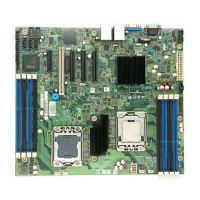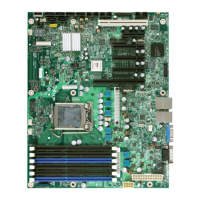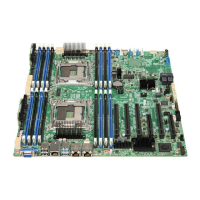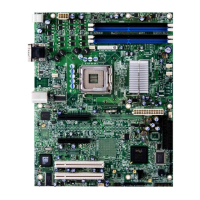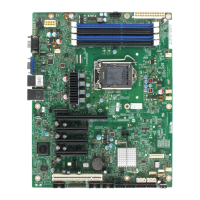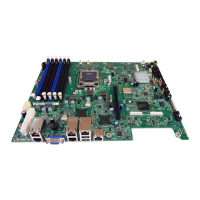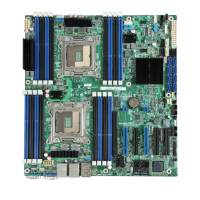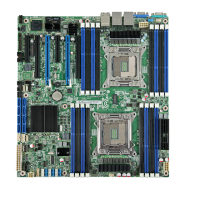Intel® Server Boards S5520HC, S5500HCV, and S5520HCT TPS Platform Management
Revision 1.8
Intel order number E39529-013
69
BIOS fails to get the Thermal SDRs, then it uses the Memory Reference Code (MRC) default
settings for the memory throttling settings.
The <F2> BIOS Setup Utility provides options to set the fan profile or operating mode the
platform will operate under. Each operating mode has a predefined profile for which specific
platform targets are configured, which in turn determines how the system fans operate to meet
those targets. Platform profile targets are determined by which type of platform is selected when
running the FRUSDR utility and by the BIOS settings configured using the <F2> BIOS Setup.
4.3.2.2.1 Fan Domains
System fan speeds are controlled through pulse width modulation (PWM) signals, which are
driven separately for each domain by integrated PWM hardware. Fan speed is changed by
adjusting the duty-cycle, which is the percentage of time the signal is driven high in each pulse.
Refer to Appendix D for system specific fan domains.
Table 18. S5520HC, S5500HCV and S5520HCT Fan Domain Table
Fan Domain Onboard Fan Header
Fan Domain 0 CPU 1 Fan, CPU 2 Fan
Fan Domain 1 System Fan 5
Fan Domain 2 System Fan 1, System Fan 2
Fan Domain 3 System Fan 3, System Fan 4
4.3.2.3 Configuring the Fan Profile Using the BIOS Setup Utility
The BIOS uses options set in the <F2> BIOS Setup Utility to determine what fan profile the
system should operate under. These options include “THROTTLING MODE”, “ALTITUDE”, and
“SET FAN PROFILE”. Refer to “Section 5.3.2.2.7 System Acoustic and Performance
Configuration” for details of the BIOS options.
The “ALTITUDE” option is used to determine appropriate memory performance settings based
on the different cooling capability at different altitudes. At high altitude, memory performance
must be reduced to compensate for thinner air. Be advised, selecting an Altitude option to a
setting that does not meet the operating altitude of the server may limit the system fans’ ability
to provide adequate cooling to the memory. If the air flow is not sufficient to meet the needs of
the server even after throttling has occurred, the system may shut down due to excessive
platform thermals.
By default, the Altitude option is set to 301 m – 900 m which is believed to cover the majority of
the operating altitudes for these server platforms.
You can set the “SET FAN PROFILE” option to either the Performance mode (Default) or
Acoustics mode. Refer to the following sections for details describing the differences between
each mode. Changing the fan profile to Acoustics mode may affect system performance. The
“SET FAN PROFILE” BIOS option is hidden when CLTT is selected as the THROTTLING
MODE option.
4.3.2.3.1 Performance Mode (Default)
With the platform running in Performance mode (Default), several platform control algorithm
variables are set to enhance the platform’s capability of operating at maximum performance
targets for the given system. In doing so, the platform is programmed with higher fan speeds at
lower ambient temperatures. This results in a louder acoustic level than is targeted for the given
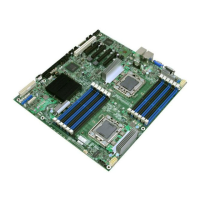
